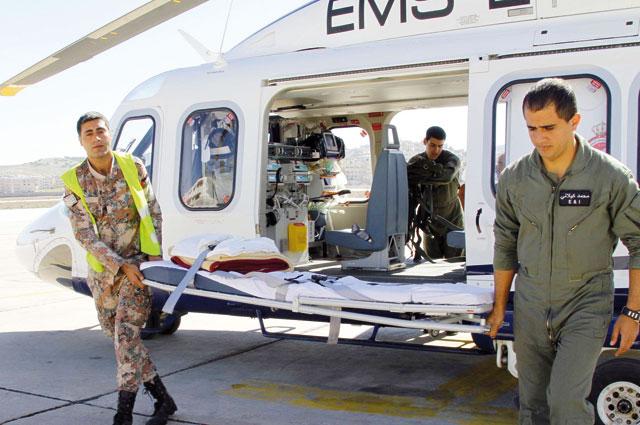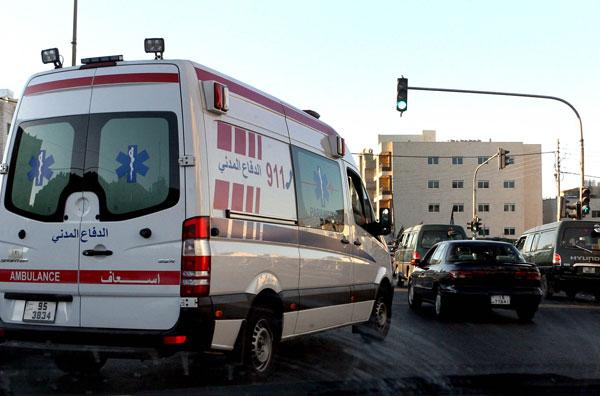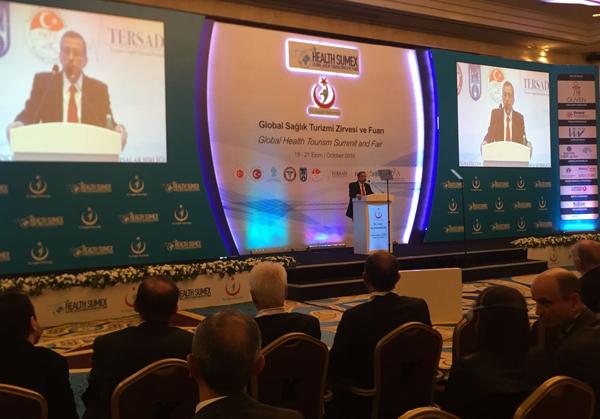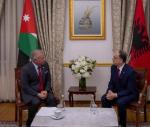You are here
Air ambulance service a regional healthcare 'milestone' — CEO
By Khetam Malkawi - Feb 20,2016 - Last updated at Feb 20,2016

The Jordan Air Ambulance Centre employs about 45 individuals, split between pilots, medical staff, doctors, nurses, paramedics, maintenance workers and engineers, as well as those working at the call centre (Photo by Osama Aqarbeh)
AMMAN — The recently established Jordan Air Ambulance Centre (JAAC) is a milestone in healthcare in the Kingdom and the region, providing hope for medical cases in outlying areas where specialised service is required, according to the centre's director.
Established in the latter half of 2015 as an independent government organisation, the centre seeks to provide specialised rescue services, patient transfer and air ambulance operations, especially for taking patients from remote areas to hospitals and medical centres, said JAAC CEO Rami Adwan.
JAAC has already transported six people in need of medical assistance from different parts of the Kingdom to Amman, and there is a plan to further develop the service to make it available for anyone in need for it, he said.
“Whenever cases of medical emergency arose outside Amman [in the past] and there was a need to transfer patients swiftly to specialised and advanced medical centres in Amman, there was no air transportation available. It had to be done by land,” Adwan told The Jordan Times in a recent interview, adding that patients' families used to call on the Jordan Armed Forces-Arab Army (JAF) to handle transportation.
This service was not offered to civilians and was only intermittently available, he recalled, “so it was really a very random service. It became exhausting and morally unacceptable for the JAF to provide the service for some people and deny others”.
In order to make this medical service available to everyone in the Kingdom, the JAAC was formed under a Royal directive enacted by the Cabinet at end of 2014 and it started its operations in the second half of 2015.
His Majesty King Abdullah provided the centre with two Agusta Westland 139 helicopters equipped with state-of-the-art intensive medical facilities.
“The main benefit of the service offered by JAAC is that we shorten the trip for any person being transported from distant places to Amman,” said Adwan, explaining that a trip from Aqaba to Amman by land would require around four hours, but with the air ambulance it would take only one hour.
Covering the cost
Since the air ambulance service costs around $3,000 per hour, JAAC’s management is looking for ways to facilitate the service through partnerships and including it as part of medical insurance.
“Our objective as a centre is to strike agreements with large insurance funds, such as the Ministry of Health… We are on the path towards inking an agreement with the ministry, whereby it will cover all the people insured by civilian health insurance and self-managed funds. Military staff and their insured families already have this service,” the CEO said.
For individuals working in the private sector, JAAC is about to close the first deal with an insurance company whereby people can cover the centre's service through a small addition to their health or life insurance premiums.
“We are talking about [additional costs] not exceeding JD10 per year for any person,” Adwan noted.
In addition, JAAC has already started soliciting donations from companies and institutions through their corporate social responsibility programmes to cover the costs of people unable to pay for the centre's services.
"We already have three [companies] on board and we will be announcing more soon," the CEO said.
“We are starting an outreach programme with hospitals outside of Amman, especially in the south and east, because the north has lots of hospitals.
Facilities and access
There are 45 helipads across the country where JAAC can pick up patients, and most government and military hospitals outside Amman have helipads where flights can land, according to Adwan.
In addition, he said there are Civil Defence Department posts on the highways that have areas suitable to be used as helipads.
"Most border points have helipads, so we are able to pick up patients from any location across the country," Adwan noted.
He said that depending on the area, "we can pick up people from the highways, but this is an exceptional service and not always available because of restrictions or limitations” on landing the helicopter.
“We can transport patients to four hospitals mainly in Amman — the King Hussein Medical Centre, Prince Hamzah,” and two private hospitals, he added.
As for the number of medical cases that are expected to require the service, Adwan said JAAC commissioned a consultancy firm to provide projections, and the study predicted that “we need around 250 medical evacuation trips in 2016, going up to 400 in 2020”.
The projections, he noted, are based on extensive analysis of the number of illnesses, emergencies and critical cases.
Today, JAAC employs about 45 individuals, split between pilots, medical staff, doctors, nurses, paramedics, maintenance workers and engineers, as well as those working at the call centre connected to the number 911.
Related Articles
AMMAN — With the influx of private vehicles on Jordan’s streets during the summer, fire engines and ambulances may experience delays in resp
AMMAN — Private hospitals containing more than 100 beds are required to have helipads to enable helicopters to drop off patients, a ministry
ANKARA — Jordan is considered a leading medical tourism destination, but several measures should be adopted to maintain this position, accor



















